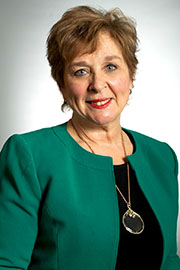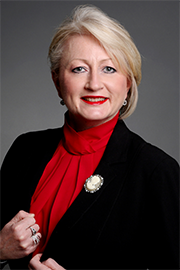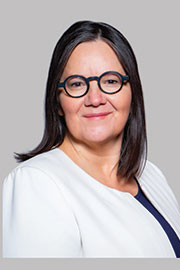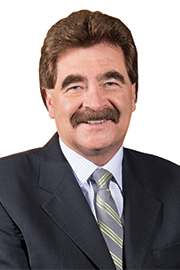- Feb/27/23 10:30:00 a.m.
Thank you to the member opposite for the question. Obviously, there have been reported cases, and we heard some of them this morning. But if Bill 60 is passed, what was previously called an “independent health facility” will now be called an “integrated community health service centre” under the oversight of Ontario Health, which reflects our intention that these clinics be integrated with our public health care system.
We are expanding oversight by bringing in this new legislation. Integrated health centres will now have to post any uninsured charges both online or in person, and every community surgical and diagnostic centre must have a process for receiving and responding to patient complaints. The new legislation is remedying a problem that has existed in public hospitals as well as clinics, and it is making sure that these things are posted so that people cannot be upcharged.
- Hear!
- Rabble!
- Feb/27/23 11:10:00 a.m.
In a few weeks, one of Canada’s first fertility clinics is closing its doors after 50 years of helping families grow. The fertility clinic at London Health Sciences Centre has helped bring more than 4,500 babies into the world since opening in 1972. These services are shifting to a private clinic, Omega, due to a lack of funding.
Speaker, what does this government have to say to the thousands of families who depended on this vital public service?
What we need right now is action to address the hospital crisis and a plan to recruit, retain and return health care workers in our public hospitals, not further privatization. Why does this government want Ontarians to settle for less when it comes to creating their families?
- Hear!
- Rabble!
- Feb/27/23 11:10:00 a.m.
This government seemed to take its eye off the ball when it came to the impact of Bill 124 on the health care system. They seem to neither know and certainly don’t report the growing number of unfilled nursing positions in hospitals and nurses leaving the profession. Bill 124 led to surgical backlogs, closed ERs, and unnecessary suffering for the people of Ontario, including our nurses. Public servants of this government’s Ministry of Health stated this in a leaked memo.
One impact of Bill 124 is quite clear: This government is underspending on health care by underpaying the remaining nurses we do have, contributing to underspending to the tune of $4.9 billion in the next three years, according to the FAO.
My question to the Minister of Health: Will the government take accountability for their Bill 124 mistake and invest some of the billions they’ve parked in contingency funds to fix the staffing mess they created with Bill 124?
- Hear!
- Rabble!
- Feb/27/23 11:20:00 a.m.
My question is for the Premier. Hamilton Health Sciences has 270 patients waiting in hospital who cannot be discharged because they are waiting for alternative kinds of care, such as long-term or home care. This has gotten so bad that Hamilton hospitals have resorted to keeping these patients in a satellite health facility. Clearly, Bill 7 and its promise to free up bed space by sending seniors up to 70 kilometres away is not working for Hamilton.
It has been four years of empty promises from this government. Will the Premier commit to repealing Bill 7 and finally focus on providing the funding our health care system needs?
These problems are getting worse, not better. Why is the Premier sitting on $3.5 billion in contingency funds instead of ensuring we have a strong health care system that people can rely on?
- Hear!
- Rabble!
- Feb/27/23 1:20:00 p.m.
I move that:
Whereas more than a third of operating rooms in Ontario’s public hospitals do not meet the 90% target for operating room use, mostly due to lack of funding and staff needed to run all the province’s operating rooms simultaneously;
Whereas the government permitted the crisis in our health care system to persist while billions of dollars in unspent public funds are allocated to contingency funds instead of Ontario hospitals that are struggling to maintain quality of care due to understaffing; and
Whereas the Ford government is appealing the Superior Court ruling, declaring Bill 124, Protecting a Sustainable Public Sector for Future Generations Act, 2019, unconstitutional, despite the minister being told about the devastating impact on hiring, recruitment and retention of health care workers;
Whereas the infrastructure to expand surgical capacity already exists and is sitting idle in public hospitals but the government is choosing to spend taxpayer funds on investor-owned, for-profit surgical suites; and
Whereas high-quality facilities across the province have idle operating room time, such as Health Sciences North, which is only funded to use 14 out of 17 state-of-the-art operating rooms and Toronto’s University Health Network, which is unable to simultaneously run all of their operating rooms because of understaffing;
Therefore, the Legislative Assembly calls on the government to fund and fully utilize public operating rooms instead of further privatizing hospital operating room services.
Make no mistake: Today’s health care crisis is a manufactured one. It is a staffing crisis caused by years of underfunding, exacerbated by the pandemic, and made worse by the Ford government’s ideological decision to suppress workers’ wages and then take them to court over it, rather than help Ontarians in pain.
Today’s motion, if passed, would represent a step forward to resolving this government’s health care crisis. By investing the money we already have—funds already earmarked for health care—we could increase capacity in publicly owned operating rooms we’ve already built to reduce wait times. We can get people the relief they need today.
Speaker, over the weekend I listened to the story of Nathan Gilson and his family on CBC Radio. They live in Waterloo. In the fall of 2021, Nathan was just 14 when he was diagnosed with scoliosis in his spine. Left untreated, it can cause a variety of health issues, and at 14 Nathan was already experiencing pain in his ankles and knees. His surgery was scheduled for April. Nathan and his family were ready, but shortly before, they received some bad news: His surgery had to be postponed due to capacity. His mom, Shelley, said it was like having the rug pulled out from under them.
Speaker, I have two children, and there’s no worse feeling in the whole world than watching your child experience pain and not being able to do anything about it, so I can only imagine what it felt like when Nathan’s surgery was delayed a second time, then a third, then a fourth.
The long wait was taking a toll on Nathan. His spine shifted by 10 degrees over just three months. Delay after delay made it feel as though he missed a chunk of growing up. Just hours before his fifth—fifth—surgery date, Nathan was told he’d have to wait longer again. His mom, Shelley, said the most heartbreaking thing was hearing him say, “They don’t care about me, Mom.”
Finally, more than a year after his diagnosis, Nathan had the surgery he needed, and the 14-hour procedure was a success, thankfully.
But Nathan’s story is just one of hundreds we’ve heard from every corner of this province, of people waiting years for surgeries while operating rooms sit with lights off because there aren’t enough staff to run them.
Nathan could have had the procedure he needed much sooner had Ontario’s top-notch public operating rooms been allowed to operate at full capacity. Nathan could have spent more time hanging out with his friends and more time in school and less time in pain.
We need to reduce wait times for people like Nathan, and we need to reduce those wait times now, and we can by funding and fully utilizing public operating rooms instead of further privatizing our system.
When hospitals compete for staff with these new private, for-profit surgical centres that the government is planning, it’s our emergency rooms and urgent care centres that are going to suffer the most. Ontario already has more than 42,000 health care job vacancies—42,000—a fourfold increase in less than a decade.
Let’s be clear: Under the government’s plan, the staffing problem in emergency rooms will worsen. Hospital workers we do have will be incentivized to go to work in the for-profit clinics on the promise of higher wages, shorter hours and better working conditions. It will mean that we may see even more hospitals close their emergency rooms, and even more often, to manage a yet worsening staffing crisis. Communities will have an even harder time accessing services close to home because for-profit centres won’t be as profitable there. And the few health care workers we have in northern Ontario will be even further incentivized to leave.
I’m proud to support today’s motion to prioritize public operating rooms because it will reduce wait times right now and retain the health care workers we need in the public system.
Speaker, we know that spending public money on private procedure clinics also winds up being considerably more expensive, both for the government and for individual patients. For-profit clinics cost the public system more because of facility fees that cover overhead, the cost of technicians, the equipment, the supplies and the infrastructure.
Let’s look at cataract surgeries as an example. OHIP pays a flat flee of $500 per patient to public hospitals for these procedures. If it costs less, the remaining money is reinvested back into public patient care. With for-profit clinics, OHIP pays a flat fee of $605 per patient for a single cataract surgery—$1,015 for both eyes. And if the clinic’s actual costs are lower—which is, of course, always their goal—the money lines the shareholders’ pockets. It doesn’t go back into patient care.
This wasted public money adds up. About 150,000 cataract surgeries are performed in Ontario every year. That’s $90 million in public money that could be redirected to for-profit clinics if we’re not careful. That’s going to cost patients more out of pocket, too—and we heard about this earlier today—through the upselling and additional user fees.
In fact, in 2021, Ontario’s Auditor General found private clinics already deliberately misleading patients for unnecessary add-ons. Patients were coerced into buying expensive lenses—as much as $5,000 per eye—to qualify for surgery. This compromises patient choice and quality of care. Patients are often worried that if they don’t pay, they won’t be able to get the appointments, or that they could receive worse or even unsafe care. And let’s not forget, this is at a very vulnerable moment.
Speaker, I want to say again that I am proud to support today’s motion to prioritize public operating rooms because it will save the government and patients a great deal of money and will result in better care.
We know the Ford government’s move toward an investor-driven model will also put Ontarians’ safety at risk. Evidence from all over the world shows that profit-driven health care results in poorer outcomes. This makes sense when you consider that a for-profit clinic will always put its shareholders’ interests first.
We are already seeing the impact of this in Ontario. A 2012 report from CPSO noted that nearly a third of all out-of-hospital clinics fell far short of safety standards. That same year, the Toronto Star found nine patients of the for-profit Rothbart Centre for Pain Care who developed serious infections. Further investigations found there were 170 infection-control deficiencies there. They even found 11 patients who contracted hepatitis C at for-profit colonoscopy clinics over three years.
In a private clinic, if a patient experiences a complication, they have to be transported—guess where?—to an emergency room. That costs precious time and puts further strain on the system—while those in a public operating room receive care faster.
Ontarians are demanding that we not go further down the road of privatization of public care.
Today’s motion to prioritize public operating rooms will better ensure patient safety. It will lead to better health outcomes. It will help fix the staffing crisis right now. It will shorten wait times to get Ontarians the care they need faster. It will cost the government less and deliver more. And it will help ensure all Ontarians have better access to safe, quality care from our province’s trusted health care heroes. We already have the money to do it. It has already been earmarked for health care, and the infrastructure is already in place.
I want to urge all my colleagues in the Legislature today to prioritize public operating rooms. Let’s get the lights back on, fill those available shifts, and get patients like Nathan the relief they need now so no one has to wait any longer.
- Hear!
- Rabble!
- Feb/27/23 1:30:00 p.m.
It’s a pleasure to rise today to respond to this opposition day motion and highlight some of the many investments and new programs our government is making to clear the surgical backlog and improve the patient experience across the province.
Honestly, Madam Speaker, the Leader of the Opposition said, “if only Ontario’s ORs are allowed to operate at full capacity”—well, I can tell you, they are allowed to operate at full capacity. She said that by prioritizing hospital ORs, we’ll be reducing wait times right now. Well, since the beginning of the pandemic, our government has been investing in prioritizing hospital ORs. We’ve invested $880 million in surgical recovery funding, almost a billion dollars, for our hospitals to increase—that’s just for them to increase; that’s in addition to the other funds they get—surgical hours and address procedures that were delayed as a result of the COVID-19 pandemic. That money is to fund more surgeries and diagnostics at hospitals, including opening more operating rooms, more for longer hours, and more on evenings and weekends, when possible.
But hospitals are independent corporations that make their own decisions about how best to use their resources. The government does not dictate how many ORs they open at any particular time on any particular day. That is up to the hospital to decide and to make sure they have the staffing in place to do so.
Although we have put in an extra billion dollars—almost $880 million—so far we haven’t got the backlog cleared. The money has gone some way to clear the backlog, but our government knows that people like Nathan, who was mentioned, are still waiting way too long. We don’t want Nathan to have to suffer, or to wait, or to have five rescheduled surgeries. We don’t think that’s appropriate, and that is why we’re taking more steps. We added an additional $330 million for the hospital surgery backlog this year, for hospital operating rooms.
Unfortunately, we’ve done what the Leader of the Opposition suggests, by prioritizing hospitals and giving them a lot of extra money, but there are limits to what hospitals can do with those resources. They can do as much as they can, and that’s what they’re doing.
But Nathan shouldn’t have to wait, so our government is taking that next step. The next step is making it faster and easier for people to access surgeries and procedures they need, by better integrating and using community and diagnostic centres to increase capacity and to complete more publicly funded services—and these, increasing community capacity, target patients who will have been waiting the longest amount of time for their treatment, and expand available options to receive safe and quality care. This will mean shorter wait times for common but vital surgeries such as cataract and hip and knee surgery—eventually; that will be in 2024—and you can expect, people of Ontario, shorter wait times for diagnostic services, as well, such as MRIs and CT scans. We’re starting by tackling the existing backlog for cataract surgeries, which has one of the longest wait times for procedures.
Just let me take a moment to digress a bit, because the Leader of the Opposition had some story about saving money and said that cataract surgeries cost an OHIP fee of $500 in a hospital, whereas at a for-profit clinic they cost $605. I wrote down what she said. The fact is that a clinic will get a fee that includes a facility fee—that’s maybe the $605, assuming those numbers are accurate; I’ll give her the benefit of the doubt—but the hospital doesn’t just get the $500 OHIP fee. The OHIP fee goes to the doctor performing the surgery, but the hospital gets hospital funding, infrastructure renewal funding, nursing funding and a whole bunch of other funding, and believe me, the clinics don’t get that. They just get the $605 mentioned by the member opposite. So it’s very misleading, I would say, to say that one kind of person is getting more than the other. That is not the way it is. The fee is a $500 OHIP fee plus a facility fee in a clinic.
The other thing I want to point out is that the member said that more than a third of operating rooms in Ontario public hospitals do not meet the 90% target for operating room use. I think she pulled this from a December 2021 report of the Auditor General, so I think that might be dated. However, if we’re going to pull from that report, let me just add this quote from the Auditor General’s December 2021 report: “Studies have shown that outpatient surgeries can be performed more efficiently and cost-effectively when performed in an ambulatory setting. As well, because these ambulatory settings often specialize in a handful of types of surgeries, more can typically be done in a day as compared to the number that are performed in a general hospital setting. For example, a 2014 study released in Health Affairs (a peer-reviewed journal on health policy and research) found that procedures done in ambulatory surgery centres took about 31.8 minutes (25%) less time than those in hospitals. Estimated cost savings ranged from approximately $363–$1,000 per outpatient case, depending on the surgery.” That’s the quote from the same Auditor General’s report that my friend opposite has quoted from. Clearly. there’s a difference of view there.
Madam Speaker, as I said, we’re targeting shorter wait times for common but vital surgeries such as cataracts, hip and knee replacements so the people of Ontario can expect shorter wait times for those things and for diagnostic services such as MRI and CT scans, because this government thinks they’re waiting too long. And we’ve started by tackling the backlog for cataract surgeries—as I’ve said, one of the longest waits for procedures. This past month, we issued four new licences to health centres in Windsor, Kitchener-Waterloo and Ottawa to support an additional 14,000 publicly funded cataract surgeries annually. As I said the other day when I was quoting the member from Thunder Bay–Superior North, people are delighted to not have to wait so long to get their surgeries. They’re very excited to be able to get on with their lives. These additional volumes make up 25% of the province’s current cataract wait-list, and this will significantly reduce the surgical backlog.
In addition to shortening times, providing these publicly funded services through community surgical and diagnostic centres will allow hospitals to focus their efforts and resources on more complex and high-risk surgeries such as Nathan’s surgery. He’ll be able to get in sooner as a result.
We’re also investing more than $18 million in existing centres to cover care for thousands of patients, including 49,000 hours of MRI and CT scans, 4,800 cataract surgeries, 900 ophthalmic procedures of other varieties, 1,000 minimally invasive gynecological surgeries, and 2,845 plastic surgeries. As a result, surgical wait-lists will return to pre-pandemic levels, it is anticipated, by March 2023. And as always, these services will continue to be provided at no cost to the patient, with their Ontario health card.
Beyond all the work our government is doing to address the surgical backlog, we’re also building up our health care system for the future. One of the key investments that we’re making is to achieve this through the expansion of access to primary care. When people have health care available in their communities and in ways that are convenient for them, they’re much more likely to seek and receive the treatment they need when they need it and stay healthier. Delivering convenient care to people in their communities will help Ontario stay healthier by diagnosing illnesses earlier, starting treatments as soon as possible, and keeping emergency wait times down when you and your family need urgent care.
Ontario leads the country in the number of people who benefit already from a long-term, stable relationship with a family doctor or primary care provider. Over 90% of Ontarians has a regular health care provider. But we can do more, and we will do more.
That’s why we’re increasing training opportunities at the same time as expanding team models of primary care across the province of Ontario. Work is already under way to train the next generation of doctors, nurses, personal support workers and other health care professionals in this province.
We’re expanding training spots to more health professionals in Ontario every year, with 455 new spots for physicians in training, 52 new spots for physician-assistant training spots, 150 new nurse practitioner spots, 1,500 additional nursing spots, and 24,000 personal support workers in training by the end of 2023.
This is all very good news for Ontarians. By adding new health human resources to Ontario’s workforce, more team-based care will be made available to Ontarians.
When family physicians work in a team model alongside other physicians, nurses, dietitians, social workers, pharmacists and other health care professionals to deliver programs and services, you get better continuity of care and more access to after-hours care.
We’re increasing the number of spots for physicians to join a team model of care through the expansion of existing family health organizations, and allowing new ones to form. This will add up to 1,200 physicians in this model over the next two years, starting with an additional 720 spots for physicians joining our family health organization model in 2022-23 and 480 spots in 2023-24. These family health organizations will be required to provide comprehensive primary care services, extend evening and weekend hours of practice, and provide more weekend coverage so people can access a family physician when they need it.
Team models of primary care have demonstrated how bringing health care providers together as one team can improve the patient experience and how people access care.
Speaker, another way that we are building on this is through the development of Ontario health teams. Teams of primary care providers, regardless of model, will be central to all Ontario health teams across the province.
Finally, I want to highlight the important work that our government is doing to develop a 10-year capacity plan for health human resources. Last fall, we began our work to develop an Integrated Capacity and Health Human Resources Plan for Ontario. We’re analyzing current gaps in our system, anticipating needs over the next 10 years, and determining solutions to addressing growing health care demands. The plan will focus on how to meet this demand through investment, health human resources and innovative solutions.
This year, we’re building on this work and shifting our focus to working directly with leaders in our health system on a workforce plan that includes where to prioritize current and future resources, addressing and minimizing system gaps, and building a strong health system for the long term. The plan will also look at specific strategies for increasing the number of health care professionals, starting with physician assistants, nurse practitioners, registered nurses, registered practical nurses and medical laboratory technologists, and will also look at the retention of our health workforce through incentives, leveraging programs like our Learn and Stay program as well.
We have more positions open, which was pointed out by the member opposite, but that’s because we are hiring more health care professionals than ever before. That’s what Ontarians want. They want to have more health care professionals delivering more health care as soon as possible.
We will ensure that we have a greater understanding of each community and their local needs and that we have a plan to recruit and retain the health care workers needed, including our family doctors, nurses, specialists and other health providers, in every region of the province. We will begin by prioritizing the areas most in need, like rural and remote communities, where we know gaps already exist.
Ontario’s population is projected to increase by almost 15% over the next 10 years—and this really addresses the comments about how somehow we’ve decided to make a crisis. I don’t think that’s true at all. What I think is that demographics are here, and demographics have a certain reality, and we need to pay attention to those. Ontario’s population is expected to increase by almost 15% over the next 10 years. That alone places significant demands on our health care system. But on top of that significant population growth, much like other OECD countries, we have an aging population. It is well known that we use much more health care resources as we age, and certainly within the last 10 years of life—it generally is considered to be responsible for some 90% of the health resources that we use in our lifetime.
The Conference Board of Canada recently noted that population aging alone will drive 20% of all health-corresponding increases in the coming decade. The population which is age 65-plus is the fastest-growing segment of the population, and especially the group over 85. That population, the group over 85, will increase by 141% between 2022 and 2042. By contrast, the population of seniors aged 75 and older is expected to increase by 49.3%, from 1.2 million to 1.8 million, over the next 10 years. By contrast, the Ontario population of 65-plus will increase from 2.5 million in 2019 to 4.6 million in 2046. It will make up 23% of all Ontarians by that point. That would be one out of four—seniors, people over the age of 65—in Ontario if that comes to pass.
We need to continue to grow our health care workforce to meet the demands of our growing and our aging population. This plan that we have and our significant investments in our health care system will incorporate the lessons we’ve learned from COVID-19 and ensure we are prepared and equipped to meet the health care needs of Ontarians for years to come.
Thank you again for the opportunity to speak, Madam Speaker, to this opposition day motion. I’m confident that the government has a plan, and I think it’s very important that we make sure there is access to surgeries for people like Nathan who are waiting too long.
- Hear!
- Rabble!
- Feb/27/23 1:50:00 p.m.
Thank you very much to the leader of the official opposition for putting forward this important motion.
This government is responsible for breaking our health care system, pushing it to the brink, and driving out nurses and health care workers with their incredible disrespect. As a result, people in Ottawa West–Nepean and around the province are suffering, waiting in pain or poor health for desperately needed surgeries. But instead of fixing the crisis, the government is now trying to sell people an illusion of access to care while they break the public system even further and allow private, for-profit providers to step in and reap profits off of people’s pain. But the government’s so-called solution is a shaky house of cards that falls to pieces if you even look at it too hard.
The government claims that we have to let private, for-profit providers into our health care system because the public system just can’t do it anymore. But in Ottawa, we have operating rooms sitting unused and underused because we don’t have the staff for them. There are over 500 vacancies for nurses currently at the Ottawa Hospital, and without nurses, surgeries just can’t happen. Among the operating rooms that are underused are the ORs at the Ottawa Hospital Riverside campus, which are not used on weekends. But in a deal that was just announced and that just started this past weekend, these publicly funded operating rooms, located in a public hospital, are now being used by private, for-profit surgeons on weekends. It’s bad enough that people are being allowed to make a profit out of space in our public hospitals rather than those spaces being used to expand the number of publicly funded, publicly provided surgeries in Ottawa, but here’s the kicker: When this deal was made, it was claimed that the surgeons would bring in all their own staff. They weren’t supposed to be using the hospital’s nurses or health care workers; only the space was to be used. So this was adding capacity that the public system didn’t have. But what happened instead? Nurses at the Ottawa Hospital are being approached in and around the operating room while they are on shift to ask if they will staff these private surgeries on the weekends. So much for bringing in their own people. So much for the Minister of Health’s assurances that her privatization plan would have no impact on staffing of the public system. What happens now, when the Ottawa Hospital already has more than 500 vacancies and nurses are being asked to take weekend shifts for private providers too?
The minister’s plan has never been about adding capacity; it is only about multiplying profits. The government should rip up this terrible plan, invest in our public hospitals, and recruit, retain and fairly compensate nurses and health care workers so that people in Ottawa can actually get the health care they deserve.
- Hear!
- Rabble!
- Feb/27/23 2:10:00 p.m.
It’s a pleasure to rise in the House today to discuss our investments in Ontario’s health care system and how our government is expanding access to convenient care across the province.
Since 2018, we have added 3,500 more hospital beds, and we’re not stopping there. We are moving quickly to expand and modernize Ontario’s hospitals to ensure you are able to connect to quality care when and where you need it. Our investments over the next 10 years will lead to $40 billion in health infrastructure across the province. These investments will increase the number of people hospitals can care for, build new health care facilities, and renew existing hospitals and community health centres.
As of the end of 2022, we have already approved 50 hospital development projects that will create more than 3,000 new hospital beds in communities across the province by 2032.
We are also investing $182 million this year to support vital repairs, maintenance and upgrades in Ontario’s hospitals.
New and redeveloped hospitals with more space to care for patients will ultimately lead to shorter wait times and less hallway health care.
Depuis 2018 nous avons ajouté 3 500 lits d’hôpital supplémentaires, mais nous ne nous arrêtons pas là. Nous agissons rapidement pour agrandir et moderniser les hôpitaux ontariens afin de garantir que vous pouvez trouver des soins de qualité au moment et à l’endroit où vous en avez besoin.
De nos investissements au cours des 10 prochaines années découlera une infrastructure sanitaire de 40 milliards de dollars à l’échelle de la province. Ces investissements augmenteront le nombre de personnes que les hôpitaux peuvent soigner, construiront de nouvelles installations de soins de santé, et renouvelleront les hôpitaux et les centres de santé communautaire existants.
À la fin de 2022, nous avions déjà approuvé 50 projets d’aménagement d’hôpitaux, qui créeront plus de 3 000 nouveaux lits d’hôpital dans les collectivités de la province d’ici 2032. Nous investissons aussi 182 millions de dollars cette année pour effectuer des réparations, de l’entretien et des modernisations de nature essentielle dans les hôpitaux ontariens. Les hôpitaux nouveaux et réaménagés avec plus d’espace pour soigner des patients entraîneront, en définitive, des temps d’attente plus courts et moins de soins de santé de couloir.
Speaker, while wait times in Ontario emergency departments are below national averages, we continue to find innovative ways to reduce wait times and make it faster and easier for Ontarians to access timely care.
The member from Nickel Belt noted in her comments that hospitals receive a certain amount for a number of hip and knee surgeries.
Our government has provided $880 million—almost $1 billion—more to get surgeries done, and they can apply for more to get it done.
The member from Niagara Falls spoke about Shouldice, which is a private care facility and has nothing to do with Bill 60. We are not expanding private hospitals, full stop.
We know that to ensure you have faster and easier access to the care you need, we need to better connect you to care within your own community. Our work to better connect and coordinate care for you is under way with the expansion of the Ontario health teams across the province. Throughout the pandemic, Ontario health teams demonstrated the importance of health providers working together to care for patients. With their leadership, communities across the province were able to establish community COVID-19 testing sites, vaccination programs and other vital services. Across the province, 54 Ontario health teams are working to improve transitions between health care providers and are also ensuring a patient’s medical record follows them wherever they go for care. They are also focused on embedding home care and primary care services so that you and your family can get care in your home or in your community.
Applications for four additional Ontario health teams are currently being reviewed. Once approved, these remaining teams will result in the province achieving its goal of full provincial coverage, ensuring everyone has the support of an Ontario health team.
With an investment of more than $106 million, Ontario health teams are also investing in digital and virtual care. These are options so that you can easily connect with a health care worker when you need to from the comfort of your home. Beginning with a focus on helping people who suffer from chronic illnesses, like congestive heart failure, chronic obstructive pulmonary disease, stroke and diabetes, Ontario health teams are developing stronger care pathways for patients. Through Ontario health teams, patients who need support for a chronic illness will receive greater care throughout the life cycle of their treatment, from screening and prevention to community support and recovery at home. A big focus of this will be better support at home or in the community, outside of hospitals. Prioritizing chronic disease management as a community or home care service will reduce hospital wait times and free up hospital beds for more patients in need.
Nous savons que pour nous assurer que vous avez rapidement et facilement accès aux soins dont vous avez besoin, nous devons mieux vous aiguiller vers des soins au sein de votre propre collectivité. Notre travail pour mieux interconnecter et coordonner les soins à votre profit est en cours avec l’élargissement des équipes Santé Ontario à l’échelle de la province.
Tout au long de la pandémie, les équipes Santé Ontario ont démontré l’importance d’avoir des fournisseurs de soins de santé qui travaillent ensemble pour soigner les patients. Grâce à leur esprit d’initiative, des collectivités de toute la province ont pu mettre sur pied des sites de dépistage de la COVID-19 en milieu communautaire, des programmes de vaccination et d’autres services essentiels.
À l’échelle de la province, 54 équipes Santé Ontario oeuvrent à améliorer les transitions entre les fournisseurs de soins et s’assurer que le dossier médical d’un patient suit ce dernier, peu importe où il va pour obtenir des soins. Elles veillent également à intégrer les services de soins à domicile et les soins primaires afin que vous et votre famille puissiez obtenir des soins chez vous ou dans votre collectivité.
Les candidatures de quatre nouvelles équipes Santé Ontario sont présentement à l’étude. Une fois approuvées, ces équipes permettront à la province d’atteindre son objectif de couvrir entièrement son territoire, garantissant que tout un chacun profite du soutien d’une équipe Santé Ontario.
Grâce à un investissement de plus de 106 millions de dollars, les équipes Santé Ontario investissent également dans des options de soins numériques et virtuelles afin que vous puissiez facilement être aiguillé vers un travailleur de la santé lorsque vous en avez besoin, dans le confort de votre foyer.
En commençant par mettre l’accent à aider les personnes atteintes de maladies chroniques comme une insuffisance cardiaque congestive, une maladie pulmonaire obstructive chronique, un accident vasculaire cérébral et le diabète, les équipes Santé Ontario élaborent des cheminements cliniques plus solides pour les patients.
Grâce aux équipes Santé Ontario, les patients qui ont besoin de soutien pour une maladie chronique recevront davantage de soins durant toute la durée de leur traitement, du dépistage et de la prévention au soutien communautaire et au rétablissement à la maison. Elles veilleront particulièrement à offrir un meilleur soutien à domicile ou en milieu communautaire, hors de l’hôpital. Prioriser la gestion des maladies chroniques en tant que service de soins en milieu communautaire ou à domicile réduira les temps d’attente à l’hôpital et libèrera des lits d’hôpital pour un plus grand nombre de patients qui en ont besoin.
Maintenant je voudrais bien lire une citation de Kavita Mehta, PDG de l’Association of Family Health Teams of Ontario : « Les soins primaires sont le fondement de notre système de soins de santé et les soins primaires en équipe offrent des services complets dont les Ontariennes et les Ontariens ont besoin. Nous sommes ravis de voir le nouvel investissement dans les soins primaires offerts en équipe, y compris les équipes de santé familiale, dans l’annonce d’aujourd’hui et nous nous réjouissons de travailler avec le gouvernement et nos partenaires et fournisseurs de soins primaires dans toute la province pour élargir l’accès aux soins primaires offerts en équipe. »
Speaker, thank you again for this opportunity to speak to our investments in hospitals and the amazing health care workers, who are unwavering in their commitment to keep our communities healthy.
I’d like to close today by thanking all the health care workers in my riding of Newmarket–Aurora for all of your incredible work. Thank you for everything you do. Merci de tout ce que vous faites.
- Hear!
- Rabble!
- Feb/27/23 2:30:00 p.m.
I want to thank the leader of our party, the MPP for Davenport, for putting this motion on the floor today.
I want to thank our health critic, the member for Nickel Belt, for so articulately saying what is really at risk right now in this moment: It is the well-being of our hospitals—let’s be very clear—because if you take these surgeries, 50% of available surgeries, and you hand them as a gift to Tory-run, private, for-profit clinics, you jeopardize the funding of our hospitals.
Do you know who’s not fooled, Speaker? Rachel Muir is not fooled. Rachel Muir is the president of ONA Local 83 back home. She leads all the nursing units at the Ottawa Hospital campuses. Rachel texted me Friday night with a revelation: A private for-profit clinic was going to be operating for the first time the following morning, at 7 a.m., at the Riverside campus of the Ottawa Hospital. She learned about it because members of her union had been approached, as the member for Ottawa West–Nepean just said, in the hospital, near the ORs, about whether they would work in this private, for-profit organization running out of a public facility. So I’ve just learned, if you’re a health care professional, how you get a raise under this government—it’s not at the bargaining table, with Bill 124 and all the assistance they give their lawyers fighting people in court; you go for 100 bucks an hour, and you work for one of the private operations run by one of their friends. That’s how you get a raise from this government. Well, guess what? Rachel sees through them.
Do you know who else sees through them, Speaker? Marilena Fox. Marilena Fox is a recording secretary of CUPE 4000. That is the group that represents almost all the workers at the Riverside campus of the Ottawa Hospital.
Did anybody ask people in administration, housekeeping, patient transportation, foodservice, trades, nursing, personal care attendants and orderlies—were any one of these people approached by the Ottawa Hospital or this government, the Ministry of Health, before they embarked on this for-profit experiment in our public system? What do you think, colleagues? Not a single one. And yet they call them heroes in this place. I just heard it over there: “We love our nurses. We love our orderlies.” It’s a load of nonsense if you walk into their workplaces and disrespect them.
This Thursday, the nurses will be rallying outside the Sheraton hotel here in this great city of Toronto. And the members of the New Democratic Party are going to be with you, nurses. We’re going to be with you, CUPE. We’re going to take on this government and embarrass them the way the education workers of CUPE did in November. Get ready for a very, very hot winter.
- Hear!
- Rabble!
- Feb/27/23 2:30:00 p.m.
Speaker, I rise today to support this motion. My colleagues have explained some of the many reasons why this is necessary.
We have operating rooms that are sitting empty because we don’t have the workers needed to staff them. At best, this is incredibly problematic, fiscal mismanagement on the part of this government.
In Ontario, when you look at our operating rooms—it’s like a person who has a beautiful, high-end car and decides to go and park it out in a field so they can get into somebody else’s tired old limousine that won’t take them where they want to go and will charge them extra once they get there.
Bernie Robinson, ONA’s interim president, said it best: “There is no health care without the dedicated care from nurses and health care professionals. A bed is just a bed without the staffing and support to ensure the patient is receiving quality care.”
It’s clear that this government has no plan to actually address the health care crisis. Look at what happened in Walkerton. Look at what happened in Chesley. Look at what happened in Listowel. They are shortchanging rural and small hospitals, and they’re shortchanging health care. Look at the 80 ER closures over the summer.
Across the province, we heard during the pre-budget consultation that Ontarians want this government to invest in a health care human resources strategy. We have the lowest nurse-to-patient ratio per capita in the entire country.
Shortly after I was elected, I was approached by seniors who had been waiting years—years—in pain for joint replacement surgeries. They were left languishing on that wait-list as a result of the Liberal government, who put those arbitrary caps on the amount of time that they could spend in those ORs. And this government is going down the same path. It’s not the answer.
This government could say yes today—they could say yes to a plan that can be implemented immediately—but they keep saying no. They want people to settle for a system that’s less effective and that will cost them more. They want to waste money. It’s wasteful to underuse our public health care infrastructure. We on the official opposition side want people to expect more. Let’s not go backwards.
I urge my friends across the aisle to protect our values, protect Ontario’s integrity, protect our health. Let’s build a province where companies want to invest. What is required is a publicly funded, publicly delivered health care system so companies know they have a healthy workforce, so they don’t have to pay for that extra—an educated workforce, so they don’t have to always retrain.
Support this motion today. Say yes.
- Hear!
- Rabble!
- Feb/27/23 2:40:00 p.m.
- Re: Bill 60
I appreciate the continuation of debate on this lovely bill. I just wanted to ask the member, in terms of building up hospital infrastructure, given the demographic need to expand hospitals, will the member support the expansion and addition of hospitals in this province?
- Hear!
- Rabble!
- Feb/27/23 2:40:00 p.m.
- Re: Bill 60
Thank you to the member for Barrie–Innisfil for your question. What I am very much in support of, when we’re talking about expanding public health care, is making sure that hospitals in Toronto, University–Rosedale, across Ontario—ensuring that their operating room capacity is at their maximum.
In University–Rosedale, we have the UHN network; we have SickKids. I have reached out to them and asked them what their operating room capacity is and they were all very clear with me: They said that they are not able to have all their operating rooms full—especially in the evenings, certainly on weekends—because they have a human resources shortage. And this human resources shortage doesn’t just exist when it comes to nurses; it exists in every single department that they’re experiencing, from human resources to finance to cleaners to personal support workers.
It’s a reason why our party has introduced this motion earlier today, calling on the Ontario government to increase capacity in operating rooms that are run by public hospitals in order to meet the need and address the surgery backlog.
- Hear!
- Rabble!
- Feb/27/23 3:10:00 p.m.
- Re: Bill 60
Thank you to the member from Guelph. Thank you for your short few minutes. You seemed to boil it down to the manufactured crisis this government has created in our health care, and really what we’re looking at, which is the profit-ization of our health care.
Can you just comment on what we really need the people of Ontario to understand, that our hospitals now have capacity? Operating rooms are sitting vacant and unused. We have emergency rooms that are closing, and we have urgent care rooms that are closing. There is capacity. This can be fixed. So why is this government hoarding billions of dollars that should be going into our public health care to address the crisis that they’ve created?
- Hear!
- Rabble!
- Feb/27/23 3:30:00 p.m.
- Re: Bill 60
I always find it interesting listening to my Conservative friends. You talked about listening; I think both presenters did. There was no consultation with the nurses. There was no consultation with paramedics. You brought in Bill 124; you never talked to the union leadership. I’d just like to know who you consulted with—certainly none of those who really are front-line.
So my question is pretty easy—well, it’s not easy for you guys. Why are you funding for-profit clinics instead of adequately paying doctors and nurses who would help increase surgical capacity in public hospitals? And this is the one that’s really creating a crisis which they won’t address—why is this government still challenging the ruling on Bill 124?
- Hear!
- Rabble!
- Feb/27/23 4:10:00 p.m.
- Re: Bill 60
I’d like to thank my colleague from Oshawa for her wonderful presentation.
I want to take you back to March 2022, when Ontario’s former Patient Ombudsman and, at that time, the Conservative health minister, Christine Elliott, almost issued a warning—or, at the very least, let it slip. She stated: “We are ... making sure that we can let independent health facilities operate private hospitals.” Possibly, when they realized how foolish and wrong this was, the minister’s spokespeople said, of privatization, “The use or function of private hospitals and independent health facilities in Ontario is not being expanded or changed.”
Clearly, funding is being cut for publicly delivered health care, as we’ve seen in the FAO’s report—cutting $5 billion—and it’s being put into for-profit health care profiteers’ pockets.
My question to the member is, why did they flip-flop?
- Hear!
- Rabble!
- Feb/27/23 4:30:00 p.m.
- Re: Bill 60
I appreciate the revised history lesson from our new Liberal colleagues. I can appreciate that they weren’t elected during the 15 years when Liberal governments fired nurses and closed down hospitals, including the Peel Memorial Hospital, which is actually the hospital I was born in, in Brampton—and, actually, I guess the other previous Liberal members in the previous government also voted against rebuilding that hospital in Brampton, to get a second hospital at the site of Peel Memorial. So I can appreciate that these members might—
When we talk about corporate profiteering and privatization—
- Hear!
- Rabble!














